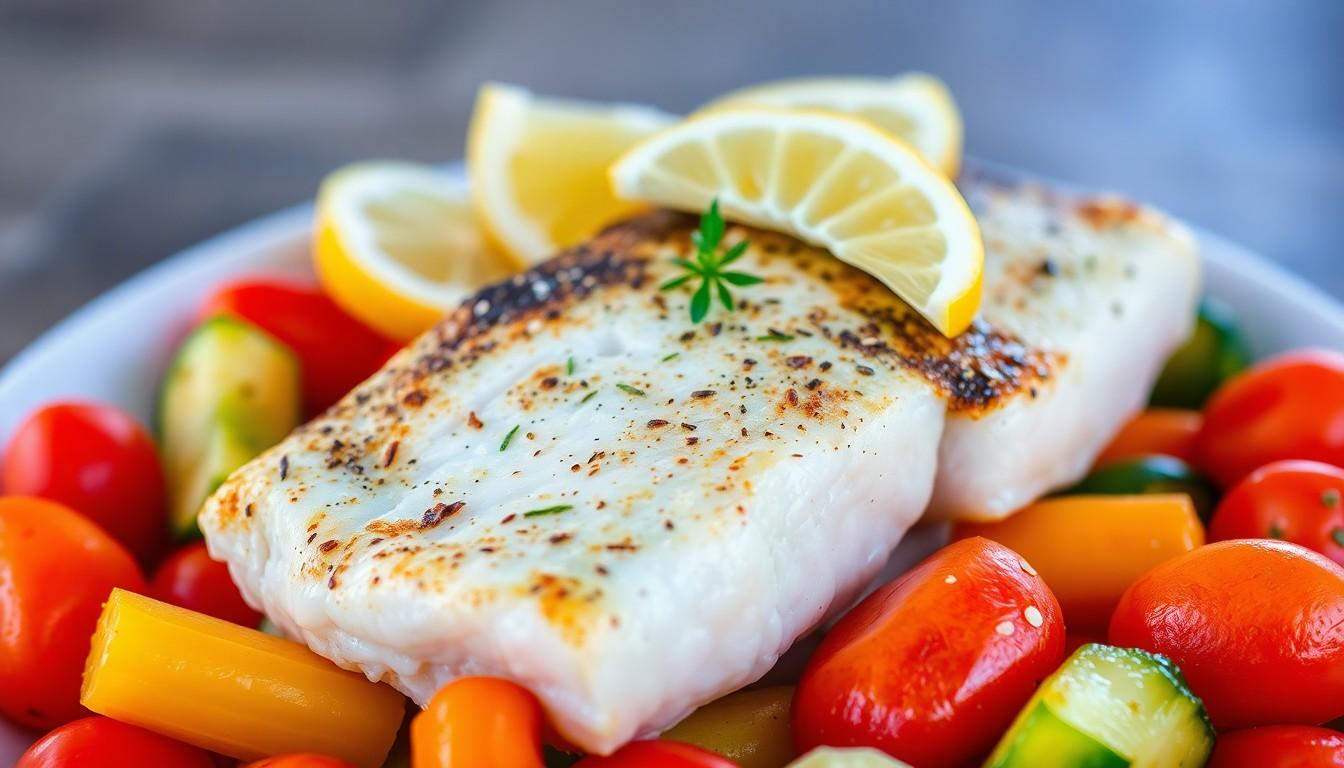Cod fish might not be the life of the seafood party, but it sure knows how to pack a nutritional punch. This mild-mannered fish isn’t just a favorite for fish and chips lovers; it’s also a treasure trove of health benefits that’ll make your taste buds dance. If you think cod is just another fish in the sea, think again!
Table of Contents
ToggleOverview of Cod Fish Nutrition
Cod fish serves as a highly nutritious seafood choice, offering an abundance of health benefits. This fatty fish stands out in terms of nutrient density, making it a great addition to various diets.
Key Nutrients in Cod Fish
Cod fish is rich in protein, providing approximately 20 grams per 3-ounce serving. This lean protein is essential for muscle growth and repair. Omega-3 fatty acids feature prominently in cod, contributing to heart health. Vitamins like B12 and D play critical roles in energy production and bone health. Minerals such as selenium and phosphorus enhance immune function and support healthy bones. Incorporating cod into meals ensures access to these vital nutrients.
Health Benefits of Cod Fish
Incorporating cod fish into a balanced diet offers several health advantages. Cardiovascular health improves due to the presence of omega-3 fatty acids, which help reduce inflammation. Consuming cod may bless individuals with better mood regulation because of its rich vitamin B12 content. Bone density benefits from the vitamin D and phosphorus found in cod. Weight management becomes easier, as cod is low in calories yet high in protein. Overall, the health benefits emphasize cod’s role in maintaining a nutritious diet.
Cod Fish Nutritional Profile

Cod fish stands out as a highly nutritious seafood choice. Its health benefits are linked to its rich nutrient composition.
Calories and Macronutrients
One 3-ounce serving of cooked cod contains approximately 70-90 calories. This makes it a low-calorie option for meals. Protein content is significant, offering around 15-20 grams per serving. Cod is low in fat, with less than 1 gram typically found in each serving. Carbohydrates are negligible, often less than 1 gram. Due to this balance, cod supports weight management while providing essential macronutrients for muscle health and energy.
Vitamins and Minerals
Cod fish is an excellent source of numerous vitamins and minerals. It provides about 2.4 micrograms of vitamin B12 per serving, crucial for nerve function and red blood cell production. Additionally, cod contains approximately 570-600 international units (IU) of vitamin D, which aids in calcium absorption for bone health. Selenium levels in cod reach around 30 micrograms, supporting antioxidant activity in the body. Phosphorus also appears prominently, with about 200 milligrams per serving, playing a vital role in cellular functions and energy production.
How Cod Fish Compares to Other Fish
Cod fish offers a distinct nutritional profile when compared to popular seafood options like salmon and tilapia.
Cod vs. Salmon
Salmon boasts a higher calorie count and fat content than cod. A 3-ounce serving of salmon contains about 200 calories and 13-15 grams of fat, primarily from healthy omega-3 fatty acids. Cod, in contrast, provides only 70-90 calories and less than 1 gram of fat per the same serving. Both fish supply substantial protein, with cod offering 15-20 grams and salmon providing approximately 22 grams. While cod’s vitamin B12 content is about 2.4 micrograms, salmon excels with nearly 4.9 micrograms. Cod remains an excellent choice for those seeking lower calorie meals, whereas salmon serves well for higher fat and omega-3 intake.
Cod vs. Tilapia
Tilapia presents a lower protein option, containing around 22 grams per 3-ounce serving, similar to cod’s protein level. However, tilapia is often criticized for lower omega-3 fatty acid levels compared to cod. Cod offers significant health benefits due to its rich nutrient profile, including about 570-600 IU of vitamin D and 30 micrograms of selenium, compared to tilapia’s minimal vitamin D content. Both fish support a balanced diet, but cod is more nutrient-dense, contributing to better heart health and improved mood regulation. Cod may appeal more to those prioritizing vitamins and minerals in their seafood choices.
Cooking and Preparation Tips for Cod Fish
Cod fish is versatile and easy to prepare. It suits various cooking methods that enhance its mild flavor.
Best Cooking Methods
Baking cod at 350°F for 20 minutes ensures a moist texture. Grilling cod provides a nice char and is best with a light marinade. Pan-searing cod in olive oil creates a crispy exterior. Steaming retains nutrients while producing a light dish. Frying cod results in a classic, crispy coating, ideal for traditional dishes like fish and chips. Each method produces delicious results, making cod a fun ingredient to work with.
Flavor Pairings
Lemon juice brightens cod’s flavor, providing a refreshing contrast. Garlic enhances the taste with depth and richness. Fresh herbs like parsley and dill add brightness and complement cod’s delicate profile. A drizzle of balsamic glaze offers a sweet and tangy option. Spicy elements such as red pepper flakes bring heat and excitement. Each combination elevates cod, making each meal unique and flavorsome.
Cod fish stands out as a nutritious seafood choice that offers a wealth of health benefits. Its impressive protein content and low-calorie profile make it an ideal option for those looking to manage their weight while still enjoying delicious meals. The abundance of essential vitamins and minerals found in cod, such as B12 and D, supports overall health, from bone density to mood regulation.
With its versatility in cooking methods and flavor pairings, cod can easily fit into various diets and culinary preferences. Incorporating this fish into meals not only enhances taste but also contributes significantly to a balanced diet. By choosing cod, individuals can indulge in a delightful dining experience while prioritizing their health.




